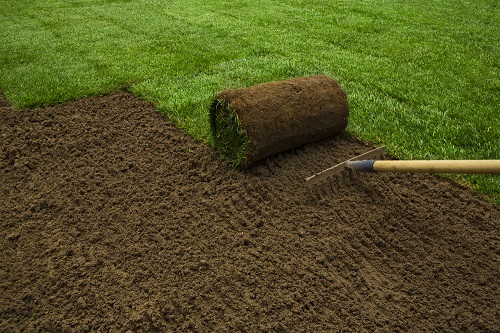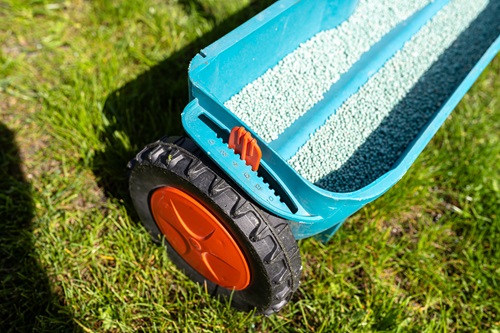
Preparation is key to a lush, green lawn. Preparing the area before seeding is necessary to cover up that annoying bare patch or uneven ground caused by recent renovations. If you want to know how to seed a new lawn, it’s important to prepare the area before starting. This lawn care guide will help you to eliminate the guesswork from preparation. You’ll also get tips on how to choose the right type of seed and care for the seedlings once they have germinated. Get your lawn mower ready, because, in a matter of weeks, you’ll be able to cut fresh grass for the first time.
The Best Types Of Grass Seed
Start by selecting the correct grass seed for your area. The hardiness of grass seed is divided into two boards. Warm-season grasses thrive in Zones 7 and above, including Bahia and Bermuda species, as well as the centipede and St. Augustine species. Cool-season grasses can tolerate freezing temperatures, and they grow well below Zone 6. Cool-season grasses include Kentucky bluegrass and fine fescue.
Beginner lawn care mistakes that prevent lush grass from growing
Other than their winter hardiness, different grass species can grow in the sun or shade, tolerate foot traffic and tolerate dry conditions. Learn more about grass species in your locality by visiting a garden center or box shop. Many grass seed mixes are sold for specific conditions or combinations of conditions. You may find grass seed mixes for dry and shaded conditions, or for high foot traffic and full sun. You should carefully read the packaging to ensure you choose the correct seed for the site.
When to Plant Grass seed
Your location will determine the best time to plant turf grass. Plant warm-season grass from March to September if you live above Zone 7. Warm-season grasses will germinate and thrive in heat when there is enough moisture to support growth. Cold-season grass should be seeded by homeowners in Zones 6 and lower from mid-August to mid-October. Autumn is the best time to plant cool-season grass seeds because of moderate soil temperatures combined with cool air temperatures and some regular rain.
How to Plant Grass Seed
It’s now time to prepare your site and start planting. The process for planting Kentucky bluegrass or Bermuda grass is the same. This 6-step method can be used to seed a new lawn or a patch of bare ground.
1. Get Rid of Weeds
Remove any existing grass or weeds. Dig out the plants with a shovel, taking care to remove all roots. Rent a seed cutter if the area you want to seed is large and full of weeds.
 2. Enhance the soil and smooth surface
2. Enhance the soil and smooth surface
Add a layer of compost that has been well-decomposed after removing the weeds. Compost, for example, can help improve drainage and add valuable nutrients. Then, till the soil until it is about 4 inches deep. The compost will be mixed into the native soil by tilling. This will prepare the seedbed. Use a stiff garden tool to smooth out the soil after tilling. You can contour it if necessary and remove any large rocks or clumps of soil. You want to create a loose, smooth soil surface which will be a good mat for grass seeds.
3. Plant the grass seed
Spread grass seed by hand over small areas. For larger areas, a drop spreader will make this task easier. Spread the seed evenly on a calm, wind-free day. The seeding rate is indicated on the bag. Usually, rates are expressed in pounds per 1,000 sq. feet. To get the best results, you should sow half of the recommended seed in one direction. Spread the remainder of the seeds at an angle of 45 degrees to the first half. You can always hire a lawn care expert to help you out.
4. Protect the Seed
Rake over the area to cover seeds with a thin soil layer. For small areas, a leaf rake will do the trick. You can use a harrow that is pulled by a lawn tractor to cover larger areas. Spread a thin layer of weed-free hay over the area to conserve moisture and stop seeds from washing or blowing away.
5. Water the Seed
Sprinklers can be used to lightly water the seedbed. Water the seedbed frequently enough to keep it moist, but not saturated. Overwatering may cause seeds to be washed away or sink deep into the soil, where they won’t germinate. Water lightly two or three times per day until the seedlings appear in about 2 to 4 weeks. Continue watering every day until the grass is 2 inches high.
6. Cut New Grass to Control Weeds
Start mowing when the turf reaches approximately 4 inches. Mow it regularly and maintain the height at around 3 inches. It is safe to apply a weed preventative product after mowing the grass and maintaining it for about two months. This will help to prevent crabgrass and other invaders from taking over new turf. Please read the product label for instructions on how to apply it.
Call Conner’s Lawn Care Service if you’re looking for a reliable lawn maintenance expert in Myrtle Beach.
Conner’s Lawn Care Service
Myrtle Beach, SC
843-504-4901
http://connerslawncare.com/

